Affiliate links on Android Authority may earn us a commission. Learn more.
Samsung Galaxy S5's ISOCELL image sensor explained
Published onFebruary 24, 2014
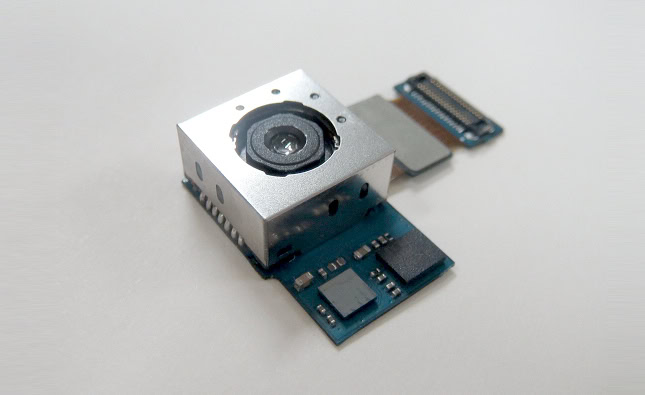
[Update – The Galaxy S5 contains Samsung’s revolutionary new ISOCELL technology. Check it out below, and more on this to come soon!]
Megapixels make for an easy number to compare, which is why so many manufacturers love to brag about it, selling higher MP counts like the panacea of all problems of smartphone photography. But there are a lot of other important features that make up a high quality image sensor, which is important to keep in mind when talking about ISOCELL.
Camera aficionados have probably heard about Samsung’s ISOCELL image sensor, which is reportedly making an appearance in the Galaxy S5. This new technology promises increased light sensitivity and higher color fidelity even in poor lighting conditions, and Samsung bills it as the next step in the evolution of backside-illuminated (BSI) sensors.
We will all be hearing a lot more about ISOCELL technology over the next several months. But ISOCELL is not just a buzzword, so it’s important to understand what the technology is and how it works. Using information from a recent technology presentation we attended, we’re going to take a closer look at exactly how Samsung wants to change smartphone cameras.
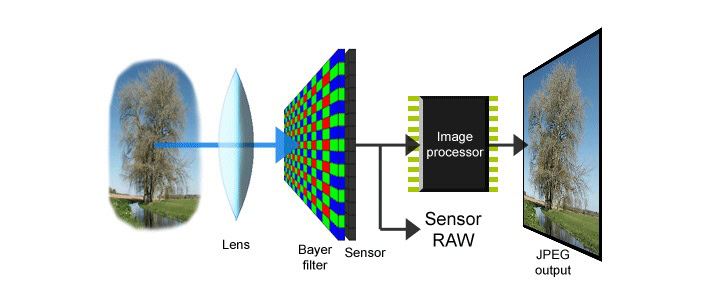
Designing a high quality image sensor
One of the biggest factors in determining the overall quality of an image sensor is the amount of light that it can capture in each pixel. It’s a very simple premise — the more of the light in a scene that an image sensor can capture, the more accurate the picture is reproduced. This means that having larger individual pixels is beneficial for image quality, because each pixel can capture more light.
However, when you have large pixels, you can cram fewer of them on the surface of the camera sensor, which results in a smaller resolution and less detailed images.
Typically, smartphone makers have been more interested in packing more small pixels on the sensor to increase resolution, than in having more sensitive pixels.
Good resolution vs Good light sensitivity
A notable exception is HTC, who attempted to buck the trend of ever-shrinking pixels with its UltraPixel technology. UltraPixels are essentially larger pixels, and that’s why HTChad to reduce the resolution of the One’s camera to just 4MP. On the flip side, thanks to this the One can take nice images even in lighting conditions that would make other cameras struggle.
However, not everyone is willing to follow HTC’s path, so sensor makers have poured billions into developing sensors that offer both high resolution and good light sensitivity, all within the constraints of a smartphone-friendly footprint.
In an attempt to capture more light even on minuscule pixels, manufacturers have gone to great lengths to improve sensor efficiency, from removing gaps between pixels to switching over to backside illumination, which increases efficiency by moving the metal wiring that connects each pixel below it, so it doesn’t occlude any light. This illustration shows how a BSI sensor captures more photons, compared to the FSI sensor, where the metal wiring reflects some of them.
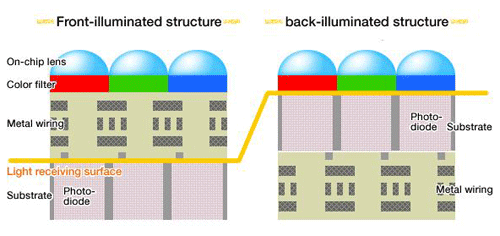
Source: Tested
But BSI technology only goes so far at maximizing sensor efficiency. One other big stumbling block for mobile image sensors is crosstalk, and this is where ISOCELL comes into play.
What issues does ISOCELL solve?
One issue that Samsung is trying to solve with ISOCELL is that, as a pixel shrinks, its well capacity, (the charge an individual pixel can hold before saturating) decreases, meaning that the pixel has a smaller dynamic range. By dynamic range with regard to imaging, we mean the difference in intensity between the lightest and darkest parts of the image.
There’s also another big issue with increasingly smaller pixel sizes, whereby photodiodes are incorrectly sensing the color and amount of light due to a phenomenon called crosstalk. Photodiodes are the tiny detectors that turn light into a current, which the sensor’s chip processes and turns into an usable image.
Crosstalk happens when some of the light that should hit a specific photodiode “leaks” to neighboring photodiodes, causing faint currents to form where there shouldn’t be any.
Crosstalk occurs for a number of reasons, but the most likely cause is light bouncing around inside the diode, which is called light crosstalk. Also, when a pixel receives more light that it can handle (light exceeds saturation levels), electronic crosstalk occurs, which is the creation of currents in incorrect photodiodes due to the leakage of electrical signals transmitting data from the diodes.
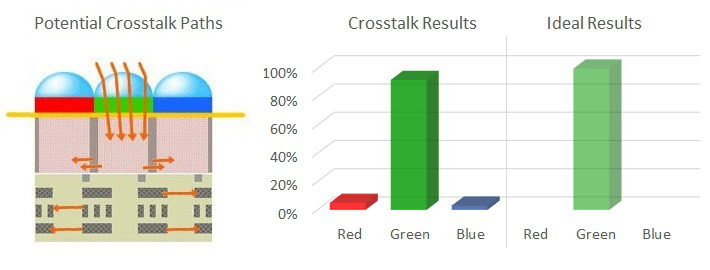
Put in other words, if we were to shine a light at a green pixel, some photons may leak into the blue and red ones and cause a small current in these photodiodes, even though there’s no red or blue in the scene. As you can imagine, this leads to a slight distortion of the original picture when you attempt to look back at it, manifested in blooming and noise. Crosstalk is unavoidable, but it can be mitigated with some clever manufacturing techniques.
To sum up, an ideal image sensor can capture enough light to accurately reproduce the original image, both in terms of a wide spectrum and large dynamic range, and should consist of accurate sensors which avoid as much crosstalk as possible.
How does ISOCELL work?
ISOCELL is essentially an evolution of existing technologies and aims to address the problems highlighted above.
First off, ISOCELL attempts to fix the problem of crosstalk by isolating each pixel with a physical barrier, hence the “iso” part of the name. These barriers ensure that the correct photons remain trapped in their desired cells and are therefore more likely to be absorbed into the correct pixel’s photodiode.
Here’s how Samsung explains ISOCELL in a video:
Compared to conventional BSI pixels, ISOCELL is expected to decrease crosstalk and increase the sensor’s full well capacity by approximately 30 percent, due to the way each color pixel is isolated. That doesn’t mean that the image quality is going to improve by 30 percent, but it will result in higher color fidelity, which will be noticed as a slight improvement to sharpness and richness.
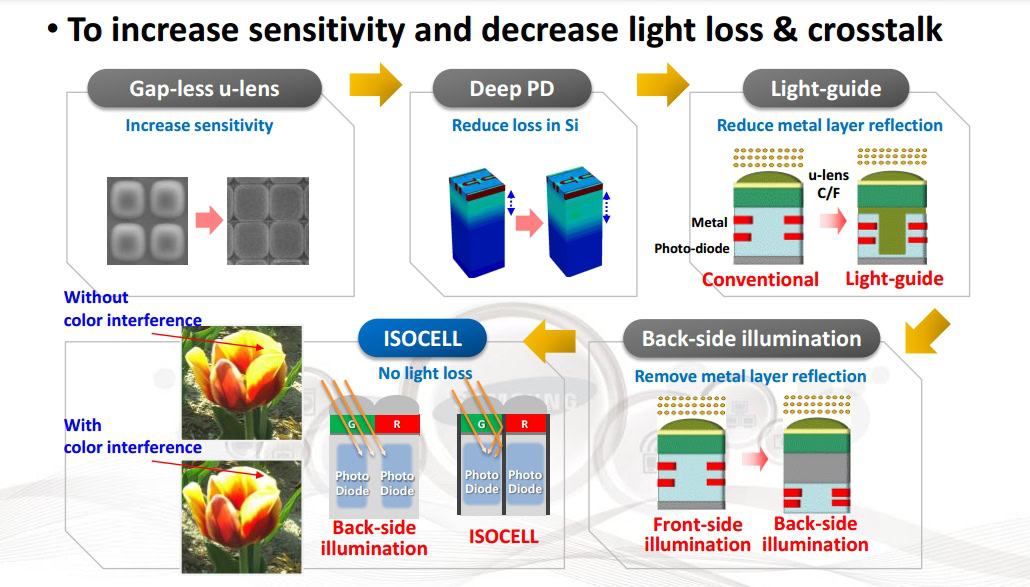
Tech details
ISOCELL is actually the commercial name of what Samsung calls 3D-Backside Illuminated Pixel with Front-Side Deep-Trench Isolation (F-DTI) and Vertical Transfer Gate (VTG).
The problem with insulating photodiodes (F-DTI) is that it actually reduces the surface of the photodiode that captures light, and therefore the full well capacity. To solve this issue, Samsung changed the design of photodiodes to use a component called Vertical Transfer Gate (VTG), instead of the horizontal type normally found on BSI sensors. Using VTG enabled Samsung to isolate photodiodes, but still have a large well capacity and therefore good light sensitivity.
Thanks to this technology, Samsung managed to reduce crosstalk from 19 percent, in the case of a regular BSI sensor, to 12.5 percent for ISOCELL. The new technology enables an excellent luminance signal to noise (YSNR =10) ratio of 105 lux, compared to the 150 lux in the case of BSI; full well capacity was increased to 6,200 e- compared to 5,000 e- on a similar BSI sensor.
ISOCELL also enables a wider view angle by capturing more of the light coming obliquely. This allows the use of lower F-number lenses, for better quality pics in less well lit environments. Finally, ISOCELL gives manufacturers more freedom to lower the height of the module or to increase the surface of the pixel array. Sensors will be able to fit into even smaller packages, potentially saving on manufacturing costs later down the line.
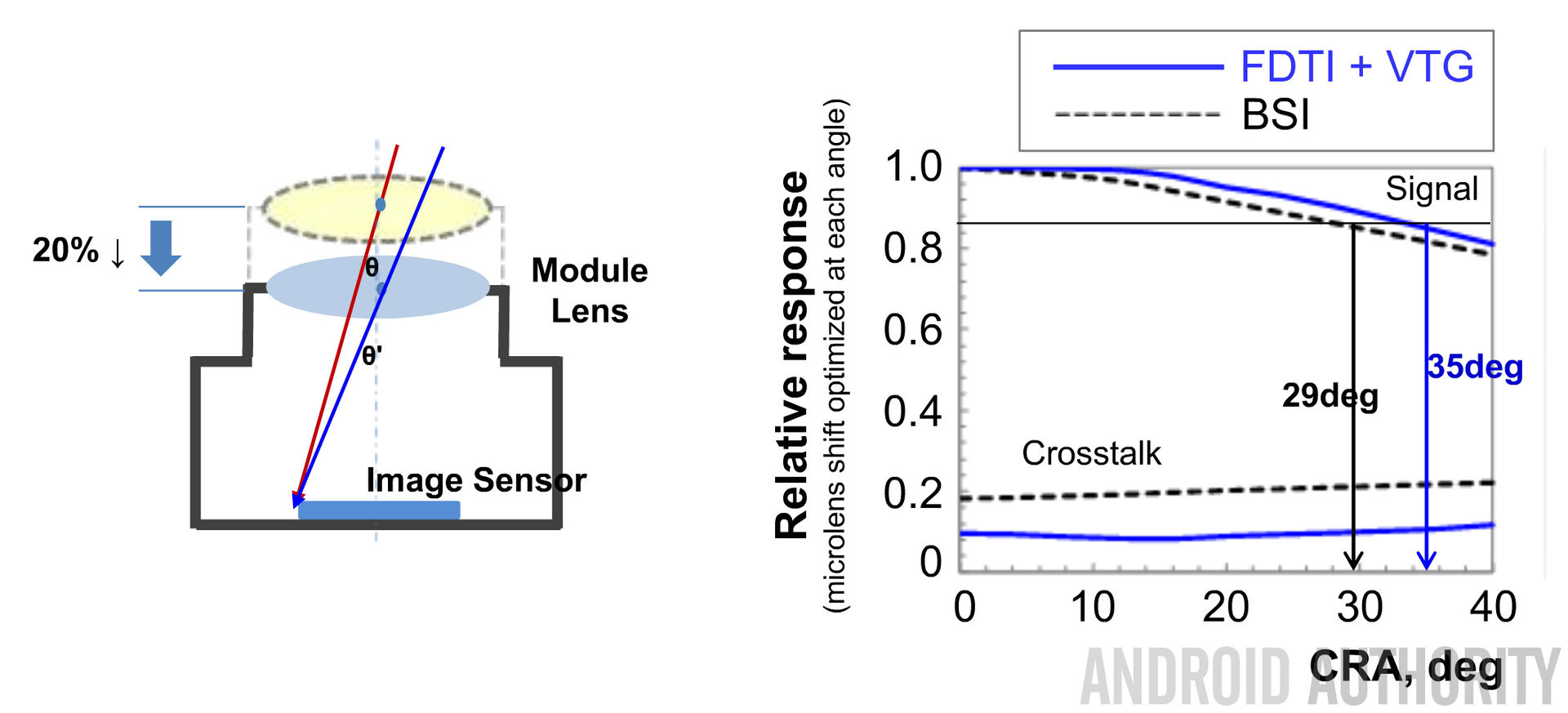
What this means for smartphones
Clearly ISOCELL is promising improvements to general image quality, in the form of improved sharpness, a wider dynamic range, and more accurate image capture. Here’s a little taste of the sorts of improvements we’re talking about.
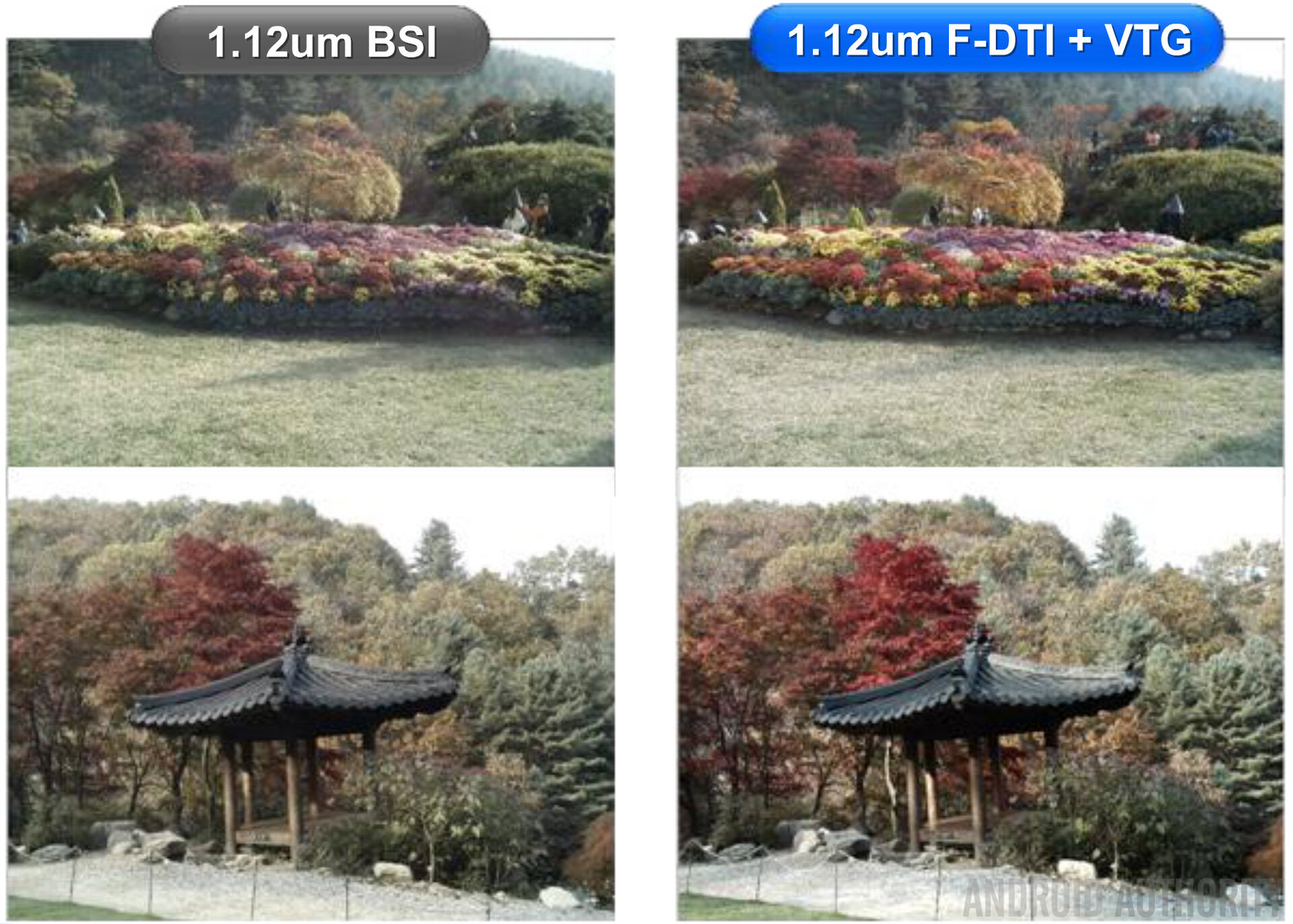
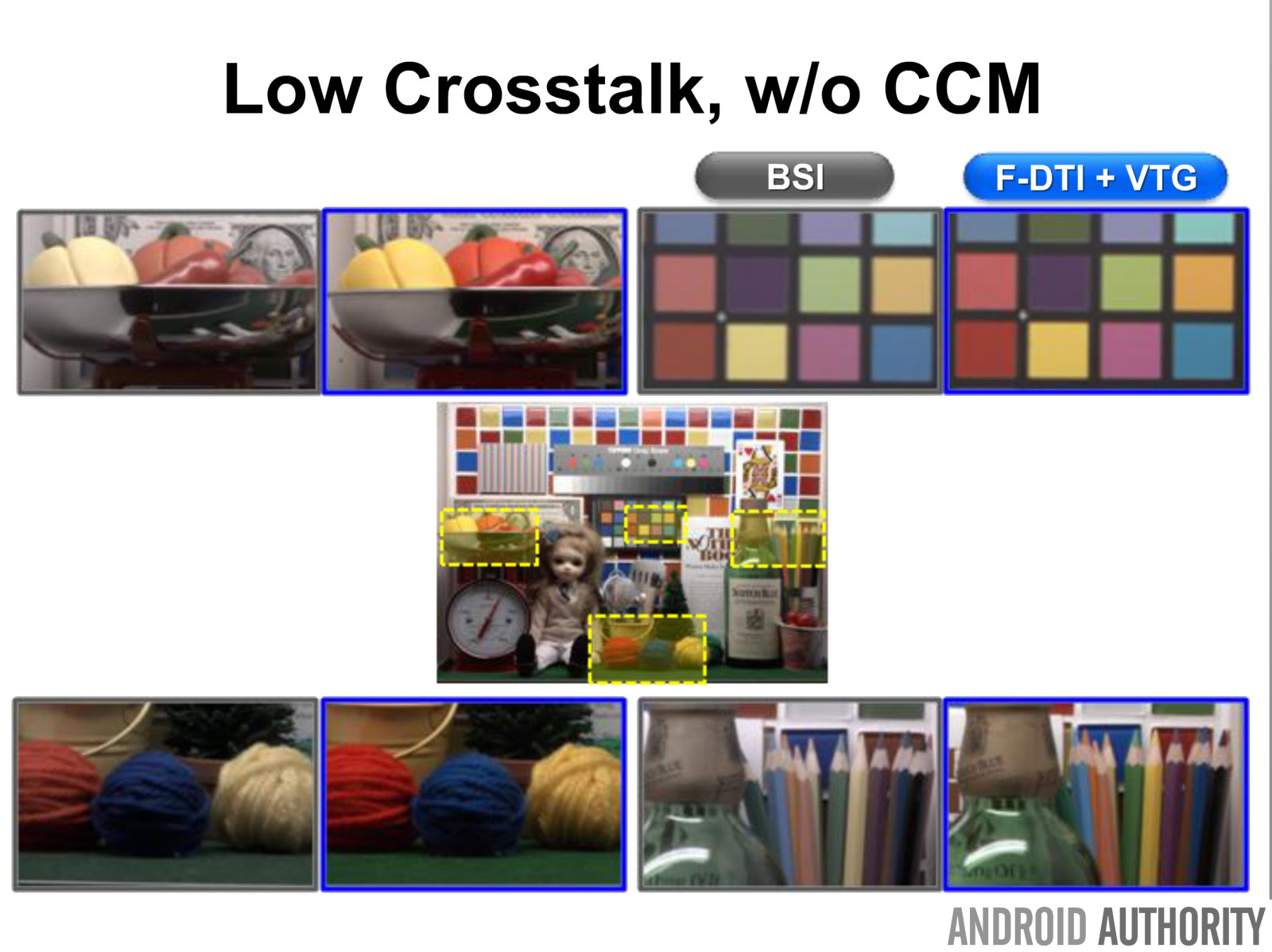
As well as image quality improvements, ISOCELL is likely to have an effect on the cost and future development of smartphone cameras. As a new technology involving a more complicated manufacturing process, ISOCELL cameras will likely start out as a bit more expensive than the current crop, so it’s probably only destined for premium level devices for now.
Although the first Samsung image sensor to adopt this technology will consist of 8 megapixels, each pixel will be sized at under 1.12 microns each, which could certainly see Samsung eventually match the number of megapixels in the current high-end sensors, without sacrificing as much image quality to noise and crosstalk. Remember that a 16 megapixel version is already rumored for the Samsung Galaxy S5. The smallest this technology can be scaled down to, at the moment, is 0.9 microns, meaning that Samsung will be able to squeeze in even more pixels in the future.
Shrinking down the size of the camera module means that the consumer could also benefit from smaller and potentially cheaper components, or designers could decide to use the extra space for improvements to other bits of camera technology, such as better lenses and optical image stabilization systems. Shrinking camera modules could make room for thinner designs or bigger batteries.
ISOCELL is a promising new technology that looks like it could consolidate Samsung’s status as a top dog in the mobile industry. Samsung itself has said that ISOCELL will be arriving in “top tier tech on modern mobile devices in 2014”, which suggests that the Galaxy S5 or Note 4 could be the first inline to benefit from this new technology.